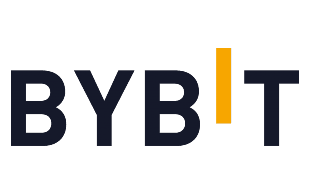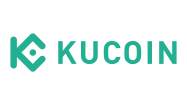Disclaimer: This page is not financial advice or an endorsement of digital assets, providers or services. Digital assets are volatile and risky, and past performance is no guarantee of future results. Potential regulations or policies can affect their availability and services provided. Talk with a financial professional before making a decision. Finder or the author may own cryptocurrency discussed on this page.
Thankfully, tokenizing a file to turn it into an NFT is a simple process — provided you’ve got all the materials. We cover how blockchains work, how creators can earn off their minted NFTs, markets where you can mint and fees to watch for.
What does minting an NFT mean?
Minting originally meant “to make,” in reference to making a coin by stamping metal. It can also mean to produce for the first time.
Minting an NFT means putting it on a blockchain and putting it in circulation. Once a file is minted on a blockchain, it can be bought or sold, and the blockchain automatically tracks all this information. Minting is also called tokenizing.
What is an NFT?
Nonfungible tokens, or NFTs, are one-of-a-kind digital assets that exist on a blockchain with unique identifiers and data. Blockchains can have smart contracts built in them to ensure that original creators of an NFT earn royalties whenever their NFT sells.
Most NFTs are bought with cryptocurrency. You can exchange one NFT for another, but since they’re all unique, it could mean a loss or gain.
Wait – what’s a blockchain?
A blockchain is a shared electronic ledger that permanently records history and allows for transactions between users. It’s a system of computers, called nodes, that keep track of ownership and transaction history.
Each node is connected and verifies information through consensus. Data is recorded in blocks, and before new information can be added, it must be verified by all nodes on the network.
In other words, it’s a whole lot of computers working together to make sure transaction history and data is correct, without the need for a centralized entity watching over it, like a bank or government agency.
One of the most widely used blockchains is Ethereum. It’s an open-source blockchain and Ether (ETH) is the native cryptocurrency.
4 steps to mint an NFT
Before minting an NFT, you need the following:
- A unique digital file
- An NFT marketplace
- A crypto wallet
- Cryptocurrency for transaction fees
Once you have these covered, here are the steps to minting your first NFT.
Step 1: Get your file ready
All NFTs are digital files. The style of NFT you want to mint could be pretty much anything — an avatar, cartoon animal, abstract art, an icon, a funny GIF or even a song — it’s up to you. These are typically accepted formats:
- JPEG
- GIF
- MP3
- MP4
- WAV
- PNG
- FVG
- WEBM
- OGG
- CLB
Legislation around NFTs and property rights is still a little messy, but plagiarizing someone else’s work to create an NFT could lead to legal issues. So stick to your own unique work and creations.
If you’re not the artsy type or want to make a large collection of NFTs, look into hiring a freelancer to design your NFT or NFT collection
for you.
Step 2: Choose a marketplace and create an account
Marketplaces can vary in what file formats they accept, NFT genres they sell and how much you can earn from royalties per secondary sale.
Marketplaces such as Crypto.com, Rarible, OpenSea, Foundation and Gate.io’s MagicBox allow users to upload their own file to be minted.
After you choose an NFT marketplace, create an account. It’s usually just an email and password combination and verifying your account via email or social media.
Step 3: Connect your funded wallet
A marketplace may require a specific Web 3.0 wallet, but you’ll definitely need one. You need some cryptocurrency in the wallet to mint an NFT on the blockchain.
Transaction fees — called gas fees with the Ethereum blockchain — are what users pay to cover the cost of powering the blockchain. Since putting the future NFT on the blockchain requires interacting with it, you have to pay a transaction fee with cryptocurrency.
These fees vary by the second and can be anywhere from $1 to $1,000 per transaction, largely depending on the speed at which the blockchain is processing transactions.
Since most NFTs and marketplaces use the Ethereum blockchain, expect to need some ETH to cover gas fees. If you’re unsure how to put ETH in your wallet, read our step-by-step guide on how to buy ETH.
Step 4: Mint the file
With a marketplace account, wallet and file at the ready, follow the market’s steps on minting your NFT.>
Typically, a marketplace has a button labeled Mint NFT or Create NFT on the top navigation bar. Once selected, upload the file, complete its title and description, then choose tags and genre. Verify the transaction by paying the transaction fees with your connected wallet.
And that’s it. The NFT is created, and it’s now a crypto asset that can be bought or traded on a blockchain. You can hold on to it for yourself or try your hand at selling it.
Can I make money with NFTs?
Yes, if it sells.
When you mint an NFT, you’re putting it on a blockchain, which lets you sell or send it to other users. You can earn from the initial sale of the NFT and also earn royalties from secondary sales forever — thanks to smart contracts built into blockchains.
A smart contract automatically executes its function without the need for a third party. It’s an agreement between two people that’s stored on a blockchain. They’re used for things like trading, investing and royalties.
In NFT sales, this means that if someone sells an NFT you minted, you automatically earn a percentage of the sale price from that secondary sale in perpetuity, thanks to the smart contract built on the blockchain.
Do I need an NFT marketplace to mint an NFT?
Not necessarily, but most people do.
You could create your own blockchain and native cryptocurrency or build your own NFT marketplace using existing blockchain tech. However, these options require programming experience and knowledge or enough resources to hire a person or team to do it for you.
Marketplaces to mint an NFT
There are mixed marketplaces that feature multiple NFT genres and some that are exclusive and only feature a few. If you’re set on a genre, compare the many marketplaces out there to find the one that best fits your needs. Compare royalty percentages and other fees as well.
Compare marketplaces to mint NFTs
Are you visiting from outside the US?
What fees are associated with minting NFTs?
Fees vary drastically by marketplace. While the only fee you may encounter while initiating minting an NFT is the gas fee, the marketplace may take anywhere between 2.5% to 10% of the final sale price once it sells. For example, OpenSea and Mintable both take 2.5% of an NFT’s selling price.
Some platforms allow for gasless minting, which just means you don’t have to pay gas fees right away or the buyer is the one who covers gas fees when they purchase the NFT. Mintable offers gasless minting, but that means it takes 5% of the sale price instead of 2.5%.
Can I mint multiple NFTs?
Yes. Minting multiple NFTs at the same time is called batch minting. However, you still have to pay gas fees for each NFT.
Bottom line
Many people see dollar signs when NFTs are mentioned — but understand that crypto and NFTs are both very volatile markets. The value of these digital assets can change by the second, and the driving force behind their values is demand, scarcity and overall consumer interest.
While anyone with a little crypto and a digital file can create an NFT, there’s no guarantee that it’ll sell at all or that you’ll break even when it’s sold. We don’t recommend dumping your life savings into cryptocurrency or NFTs. It’s not guaranteed that you’ll make any money by minting NFTs to sell on the market.
Whether products shown are available to you is subject to individual provider sole approval and discretion in accordance with the eligibility criteria and T&Cs on the provider website.
Ask a question
More guides on Finder
-
Top 29 NFT and cryptocurrency influencers in 2022
Check out the top tastemakers for crypto, NFTs, DeFi, Bitcoin and blockchain technology, from NYT experts to published authors and YouTubers.
-
Finder Awards 2022: NFT marketplaces
We compared over 30 NFT marketplaces to award the top platforms of 2022.
-
NFT vs. Crypto
Crypto and NFTs are far from the same thing – learn the differences.
-
Town Star review: An addictive P2E NFT farming simulation
In this Town Star guide you’ll learn how Gala Games’ free-to-play NFT farming simulator with P2E potential puts fun first.
-
NFT trading cards: What they are and how they work
Explore the world of NFT trading cards
-
My DeFi Pet game guide
My DeFi Pet is a blockchain game with many ways to interact with your NFT pets.
-
NFT statistics
The definitive ranking of the NFT adoption across 26 countries.
-
Crypto.com NFT marketplace review
Trade, mint and collect with Crypto.com’s NFT marketplace.
-
eBay NFTs review and guide
A deep dive into eBay’s foray into the NFT ecosystem, looking at everything from available categories to potential drawbacks.







